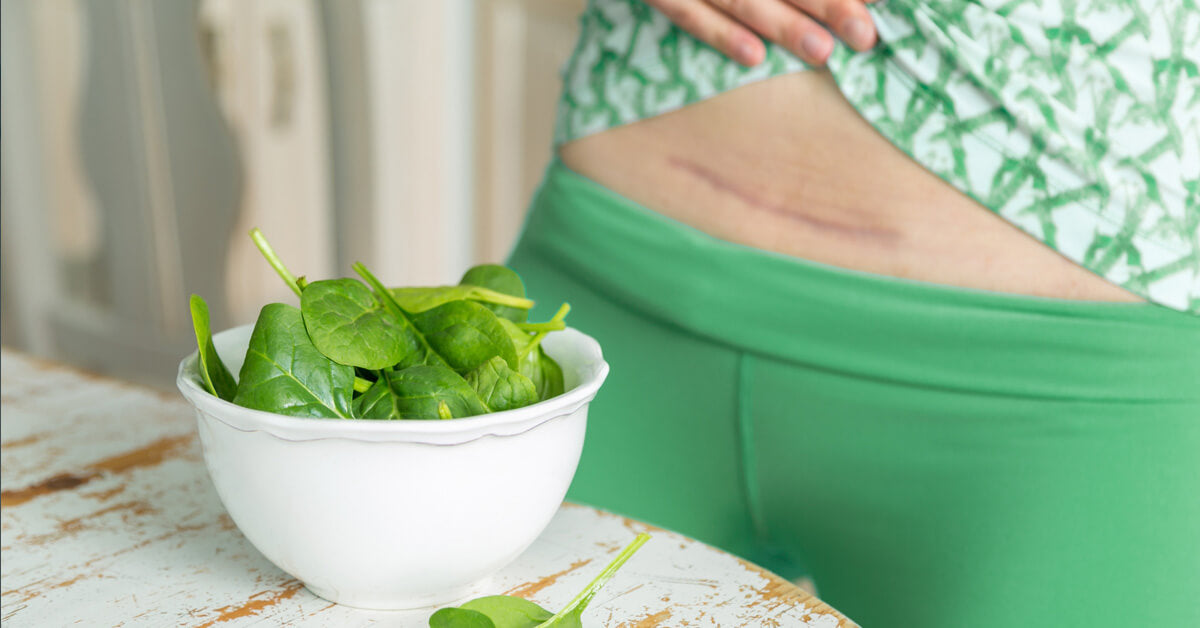
Postpartum Care for C-Section Delivery
While natural birth is a safer way, some mothers undergo C-section due to unprecedented situations as a safer way to deliver their baby to avoid any further complications.For a mom-to-be, how you want to deliver your baby is one of the major decisions you have to make.
There are two options - natural birth and C-section. While the former is safer, we see more deliveries being done through cesarean. However, it is a complicated procedure.
So, why do so many mothers have to undergo C-section delivery? Due to unprecedented situations such as prolonged labor, abnormal positioning of the baby inside the womb, fetal distress, etc. Therefore, doctors recommend C-section as a safer way to deliver your baby to avoid any further complications.
If you're curious about the postpartum period and postpartum care after a C-section delivery, read this article till the end.
How Is It Different From NSD or Vaginal Delivery?
Natural birth, also known as vaginal delivery, is something a woman goes through with or without any pain medicines or any other medical help.
Usually, natural births can lead to shorter stays in the hospital, lower rates, and faster postpartum recoveries. Some women require medical intervention (for instance, during complications) and some do not.
The other option is called C-section or Cesarean. It is a surgical procedure that helps to take the baby out from the mother. It is typically opted for when natural birth-giving is not a viable option or when a mother requests it. C-section is typically completely planned and requires heavy medical intervention.
C-section Delivery Aftercare
First Four Days of C-Section Postpartum Care
Post One Hour: Right after surgery, you will be moved to the post-operative area, where the hospital staff will keep you under observation. During this time, you won’t feel anything in your lower body due to anesthesia.
Post One Day: After a couple of hours, you’ll be moved to the postpartum recovery area from the post-op area. Nurses will massage your uterus, encouraging it to try resuming the normal contraction process & shrink to its normal size.
During this time, you will be given ice chips to eat and later will be put on a liquid diet. This will continue until your doctor gives you a green signal to eat solid food again.
Post Two Days: Doctors will most likely remove the catheter on the next morning of your c-section surgery. This will allow you to move around a bit, at least a few trips to the bathroom.
Even a little physical activity like this will help to improve your bowel movements and will help you reach your baseline.
During this time, you can also take a shower if you’d like. However, make sure you don’t scrub the incision area; let the soapy water run over it. If you’re thinking of taking a bath, don’t! Usually, it takes around 7-10 days for bathing to become safe.
At this point in the postpartum, you may suffer from gas and bad bowel functions. This can lead to excruciating gas pains. Your doctor may prescribe medicines to help with passing gas and enhance your bowel functions.
Post Four Days: Moms who give vaginal delivery usually only take two days for recovery, however, C-section keeps them in the hospital for at least four days.
Your doctor will advise you to take care of the incision and keep it clean to avoid any kind of infection. You’ll also be advised not to lift anything heavier than your baby, along with avoiding sex, using tampons and douching until after your sixth-week check-up.
Week 2 of C-Section Recovery
Now, you should be visiting your doctor for a postpartum check-up to get the incision examined. Your incision should not show any signs of redness or swelling, even if you’re running a slight fever - call your doctor.
Also, by now, you should feel extremely better (yes, even when you had major abdominal surgery just two weeks earlier). However, do expect some pain and cramps because your uterus will require another four weeks to begin normal functioning (contractions).
You may also look pregnant-like at this stage and even further down the road of recovery (as your uterus is yet to shrink back to its non-pregnant state).
Week 4 of C-Section Recovery
By this stage, you will feel more comfortable, move around more swiftly and feel a lot better overall. However, don’t go overboard with how much you have recovered and always keep your expectations a little low.
If you still feel any kind of pain, take things slow and if you feel exhausted, take as much rest as you want. You can also take pain medications if your doctor prescribes any.
You can speed up the process of correcting your posture and straightening your spine with the help of a postpartum belly band. If you’ve had a normal delivery, you can start wearing the belly band two to three hours after delivery. For C-section deliveries, however, it’s a good idea to wait for your stitches to heal fully and get your doctor’s opinion before using the band.
Week 6 of C-Section Recovery
Congrats! You will be fully recovered from C-section by now. Remember, the healthier you are before surgery, the faster you will recover postpartum.
Also, by this stage, your sutures would be 50% dissolved, your uterus would have shrunk to its original size and you’re free to have sex. Yes, some women do complain about pain when something bumps into the incision area, but mostly, it is healed.
 |
Meet Our KeaMommy Contributor: Avery K. When she isn’t looking after the many needs of her 2 kids, Avery enjoys taking walks in the park, enjoying nature, and getting her daily fix of caffeine. |

























































